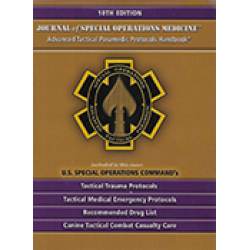Inner Ear Barotrauma After Underwater Pool Competency Training Without the Use of Compressed Air Case and Review
McIntire S, Boujie L 16(2). 52 - 56 (Journal Article)
Inner ear barotrauma can occur when the gas-filled chambers of the ear have difficulty equalizing pressure with the outside environment after changes in ambient pressure. This can transpire even with small pressure changes. Hypobaric or hyperbaric environments can place significant stress on the structures of the middle and inner ear. If methods to equalize pressure between the middle ear and other connected gas-filled spaces (i.e., Valsalva maneuver) are unsuccessful, middle ear overpressurization can occur. This force can be transmitted to the fluid-filled inner ear, making it susceptible to injury. Damage specifically to the structures of the vestibulocochlear system can lead to symptoms of vertigo, hearing loss, and tinnitus. This article discusses the case of a 23-year-old male Marine who presented with symptoms of nausea and gait instability after performing underwater pool competency exercises to a maximum depth of 13 feet, without breathing compressed air. Diagnosis and management of inner ear barotrauma are reviewed, as is differentiation from inner ear decompression sickness.


 Español
Español 




